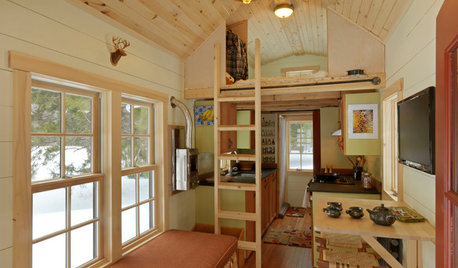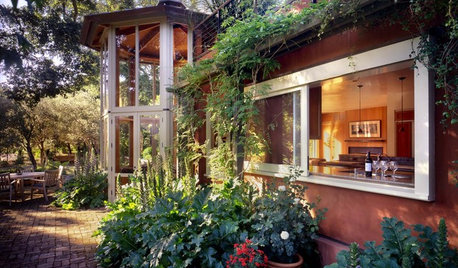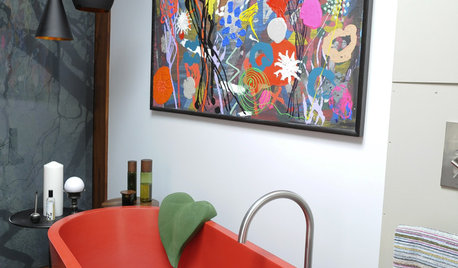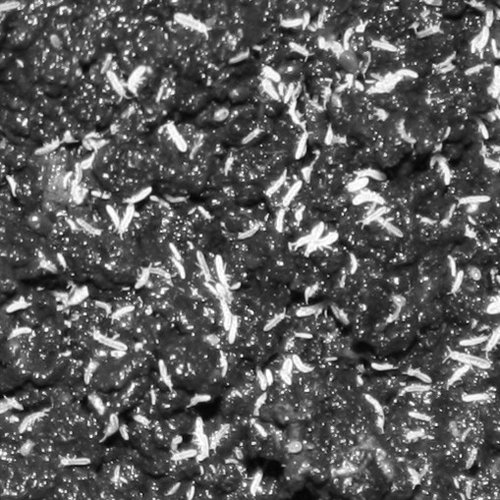My indoor, plastic bins have been havens for springtails (Collembola sp.) ever since I naively inoculated the bins with local leaf litter. To my eye, the density of the springtails has been "phenomenal". Since there are those here at the vermicomposting site that have questioned my veracity with regard to other reports of large numbers of animals, (worms), I thought I should start with photo-verified facts before I wax effusive with how impressed I am with the density of springtails in my indoor bins.
First, there are two bins, and my subjective perspective was that even though the density in both bins was very high, the density in one of the bins was considerably greater than the other. An objective quantitative analysis revealed that opinon to be correct.
Here are some "random" images of the some portions of the bins showing the somewhat uniform distribution of the springtails throughout the bins.
First the "high density" bin:
and then the "lower density" bin:
Then, taking multiple (21), random samples (images) of 20mm x 20mm squares from each bin, I used Biopar's proprietary software and counted the springtails in each of the samples from each bin. Here are some images of the "human readable" intermediate steps that will help - I hope - give "you" some idea of some of the mechanics of the process.
and the next step:
The tiny white spots in the first four 20mmx20mm pictures are specular reflections from the moist surface. Also, the black and white images do not show all of the counted springtails, just those in the first pass of image processing.
After 'turning the crank', the average density in the "high density" bin was 0.56 springtails per square mm. In the "lower density" bin, it was 0.37 springtails per square mm. At the level of the surface of the 'dirt', the dimensions of the surface of the dirt in the "high density" bin was approximately 508mm by 381mm, or 193,548 square mm. Yielding a SURFACE population estimate of 108,386 springtails. In the "lower density" bin, the surface population estimate was "only" 78,884 springtails.
There are two reason why I emphasized "surface": 1) there are LOTS of springtails below the surface, and 2) from observation alone and without "doing the math", I think the subsurface density is at least twice the surface density! If that presumption is correct, AND the springtails are close to uniformly distributed throughout the "compost", (without testing, the weakest assumption), then the density of the "high density" BIN is 14,516,100 springtails! THAT'S MORE THAN 14 MILLION SPRINGTAILS in that ONE BIN!
Assuming that the density is not uniform from surface to "floor", let's cut the subsurface density in half, that's still over SEVEN MILLION springtails in that one bin!
I suspect that even with the photgraphic evidence and explanation, those that can't believe what they don't see will once again question my veracity. That's OK. (Actually it's NOT "OK", but I can 'handle' it without having a tantrum.) This post isn't an attempt to impress anyone about me. Rather it IS an attempt to:
1) Give some idea of the density of springtails in my indoor plastic bins,
2) To "impress" people - as I am impressed - with the amazing numbers of springtails that are possible in a relatively small space, and
3) provide some "proof", for those with open minds, that when I say "thousands", or in this case, MILLIONS, and I don't qualify that comment with respect to hyperbole, that I actually MEAN "thousands" or millions.
I am completely open to any and all questions regarding my methods, calculations or anything else anyone would like to ask. What I'd REALLY like is some discussion on the "amazingness" of this. I knew the springtails numbers were high, but this is truly astounding, and I can SEE THEM!
Paul





















renais1
pskvorcOriginal Author
Related Discussions
Heated worm bin
Q
planning design for new indoor bin
Q
Protein in a worm bin
Q
Encouraging Population Growth in the Bin
Q
chuckiebtoo
mendopete
barbararose21101
pskvorcOriginal Author